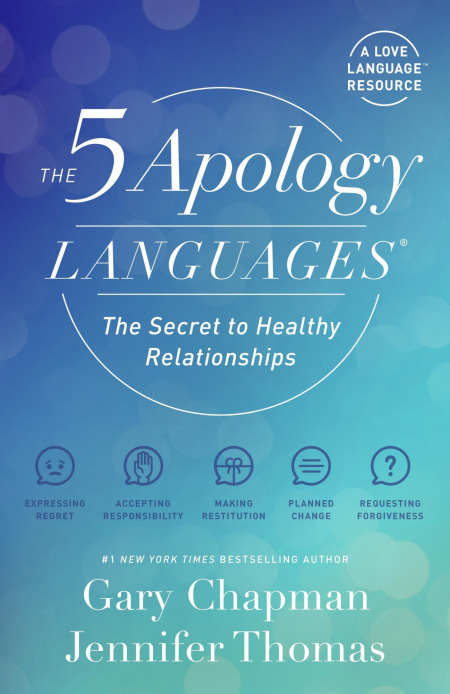You know those days when the universe seems to be conspiring against you? Like the one I had one recently: a bad night’s sleep, a nagging headache, spilled coffee, and unavoidable morning traffic, just to get things started. Those little things added up to form a ball of frustration that I lobbed at someone close to me like I was vying to be the last one standing in 8th grade dodgeball. A few sharp words were all it took, and then that sinking feeling in my gut joined the list of everything else that had gone wrong that day. I messed up. I hurt them.
Hurting others is easy, so why is apologizing so hard? It could be because we have different apology languages, says Gary Chapman in his book The Five Languages of Apology, co-written with Jennifer Thomas.
You may recognize Chapman’s name from his The Five Love Languages books; the original work was first published in 1992, consistently appearing on the New York Times bestseller list as new editions were released over the ensuing three decades.
Although Chapman himself has a background in religious teaching, his writing on helping people recognize and communicate their love language has resonated with many regardless of their spiritual beliefs. Let’s dive into his five apology types and figure out which ones we need for ourselves, or which ones we may need to extend to others.
What Are The 5 Languages Of Apology?
#1 Expressing Regret
“I’m sorry.”
Just two simple words, but don’t mistake brevity for unimportance. It’s tempting to skip the ‘sorry’ and jump straight to action-oriented solutions. Do we really have to go over the part where I messed up? I’d rather just rush past that and get to the hand-holding and singing “Kumbaya.” This type of apology is important to people who have been emotionally hurt, because it first acknowledges their feelings before rushing to fix things.
#2 Accepting Responsibility
“It was wrong for me to _____.”
Naming the mistake makes sure that both parties are clear on what went wrong. Notice how there’s no ‘but’ at the end of that sentence? This is where we tend to sneak in excuses to minimize our actions, but when it comes down to it, the hurt happened regardless of whether there was an excuse for it or not.
#3 Making Restitution
“I’d like to ______ to make it up to you.”
Words are nice, but we have the saying ‘actions speak louder than words’ for a reason. For go-getters and problem solvers, restitution is probably the most natural form of apology. This could mean paying an expense or repairing/replacing something that was broken. When the damage isn’t physical but, instead, emotional, restitution can look like dedicating special time to someone or going out of your way to do something they like.
#4 Genuinely Repenting
“I’m planning to ______ so that this doesn’t happen again.”
It’s easy to mistake repentance and restitution, because both are actions that one party does to apologize. The main difference is that restitution is a one-time action to make things right, whereas repentance requires ongoing changes in behavior.
This type of apology is important to people who like having a plan, as well as for people who need reassurance that things will be different moving forward. The goal, in the end, is to not need to apologize more in the future, because we will have figured out a way to defuse problems before they blow up.
#5 Requesting Forgiveness
“Can you forgive me?”
At this point, we want them to say “Yes, absolutely! Apology accepted,” and then we ride off into the sunset, living happily ever after. The truth is that sometimes their answer is “I don’t know” or “I need more time.” This type of apology comes last, because after all is said and done, it gives agency to the person who was wronged. The hurt and subsequent apology are done to them, but requesting forgiveness puts them in control.
Although Chapman and Thomas’ book organizes these ideas as five different types of apology, apologizing will usually include two, if not three (or four, or all!), of the types.
Still not sure which of these types of apologies you need? Here’s a quick quiz by the book’s publisher that has loads of examples for different types.

Have you heard of the 5 apology languages before? What’s your apology language? Share your experiences with us in the comments below!
Read These For More Advice On How To Build Stronger Relationships:


